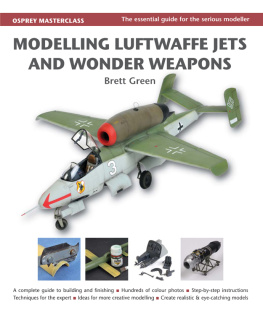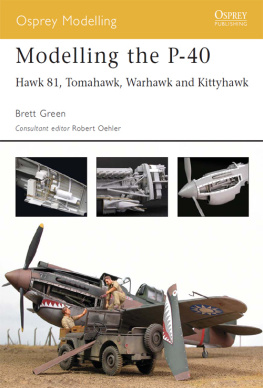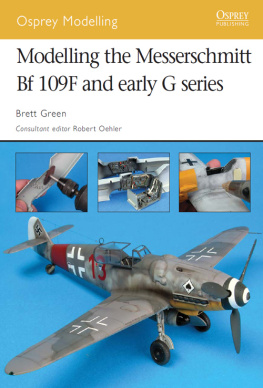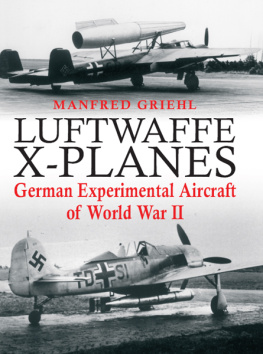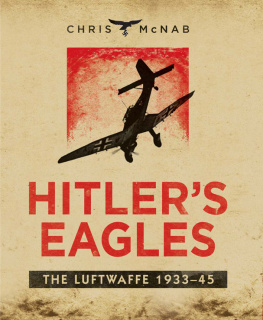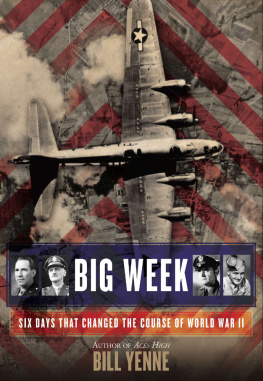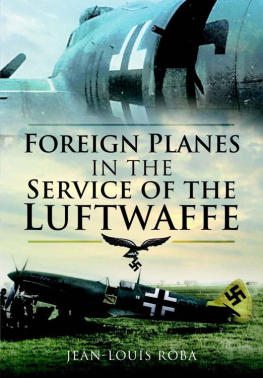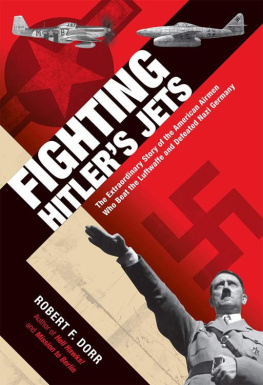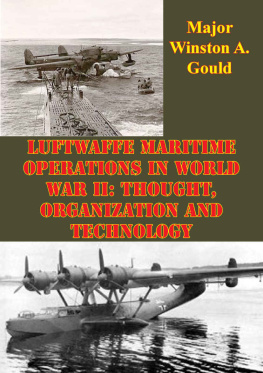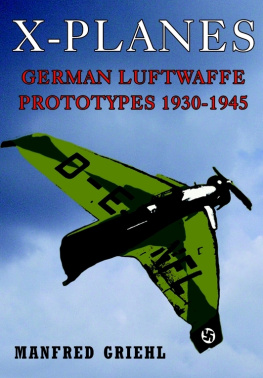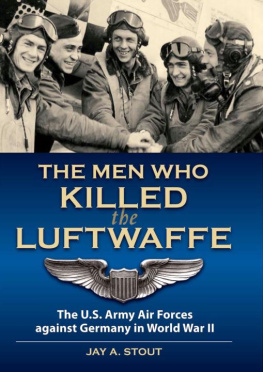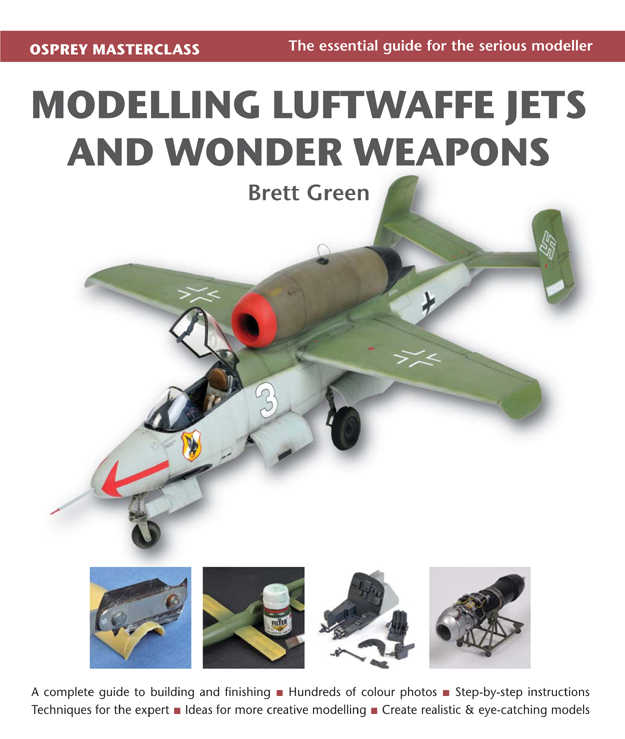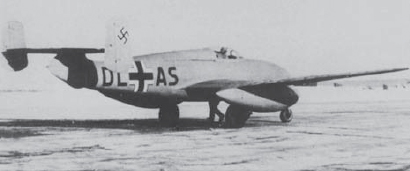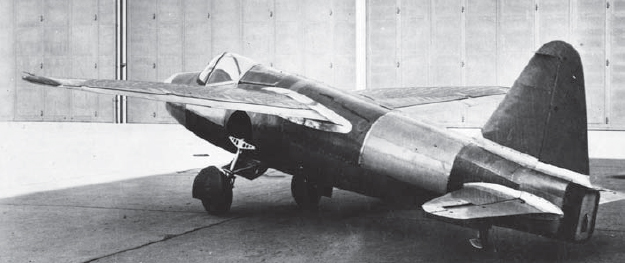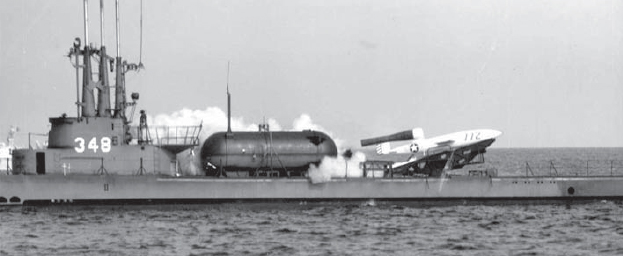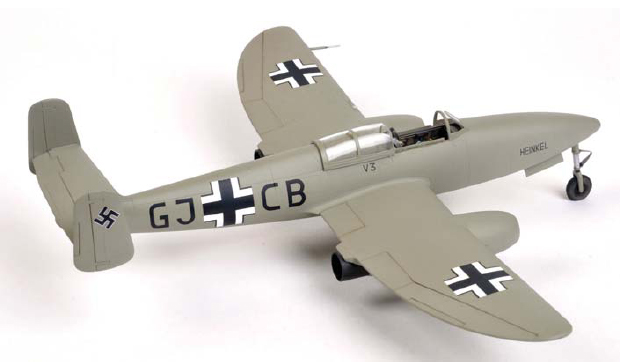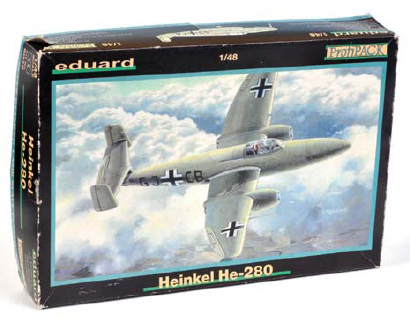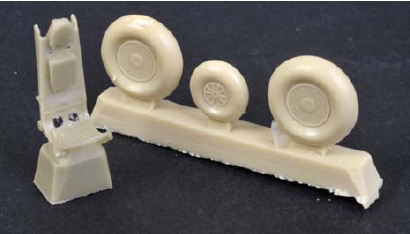OSPREY MASTERCLASS
Modelling Luftwaffe Jets and Wonder Weapons
Brett Green
Series editor Marcus Cowper
CONTENTS
D AWN OF THE JET AGE
I NTRODUCTION
W hile the Allies largely relied on mass production to help them win World War II, Germany put a great deal of its limited resources into new technologies and wonder weapons.
Nowhere was this more evident than some of the revolutionary aircraft developed for the Luftwaffe. By the end of 1944, a number of jet and rocket aircraft were entering front-line service in the roles of high-speed interceptor, fighter, reconnaissance and bomber.
In addition to these tangible assets, which were used with varying degrees of success, the drawing boards of Germany were littered with dozens of advanced designs that never reached the prototype or production stages.
The first jet fighter was the Heinkel He 280. This is the initial prototype, V1, that crashed because of engine failure on 13 January 1942. The pilot ejected safely. (US Dept. of Defence)
Many of these operational and paper projects advanced the pace and influenced the direction of aircraft development in the decades following World War II, with many of the German engineers responsible for these innovations seamlessly continuing their roles in the United States and the USSR.
Modellers have had a long fascination for the Luftwaffes jet arsenal and secret weapons of fact and fiction and this new Osprey Masterclass book explores the Luftwaffe jets and rocket planes that saw service at the end of World War II. We discuss the background behind these wonder weapons, and cover powerplants and cockpits in detail with photographic walkarounds and modelling guides. We also discuss the new rocket and missile technologies and the Luftwaffe 46 phenomenon what if aircraft that never saw service, but can now appear as scale models.
The Heinkel He 178 was the worlds first practical jet. It was powered by an HeS 3 turbojet engine, and made its maiden flight just before the outbreak of war on 27 August 1939.
USS Cusk (SSG-348) firing a Loon missile during 1951. The Loon missile was a post-war American copy of the V-1 flying bomb. Many post-war jet and rocket designs were closely based on those of wartime Germany. (US Navy photo)
There is a detailed case study of a particular Messerschmitt Me 262 A-2a, Black X. The history of the aircraft and its fighter-bomber jet Geschwader, in addition to details of its pilot and its fate after the war, are accompanied by photos of a model of this fascinating Stormbird.
Special attention is given to painting late-war jets and rocket aircraft, with step-by-step techniques offered for bare metal, unfinished plywood and, of course, the ever-controversial RLM camouflage colours.
F IRST JET FIGHTER : THE H EINKEL H E 280
B Y B RETT G REEN
Germany invested significant resources in wonder weapons including jet- and rocket-powered aircraft even before the outbreak of World War II. The Luftwaffe reaped the benefit of this advanced research with a number of practical designs and the worlds first operational jet fighter. The cost to Germany was a lost opportunity to standardize and mass-produce conventional fighter aircraft a decision that may have had an effect on the duration of the war, if not the actual result.
In this chapter, we examine some of the early jet aircraft designs, and build Eduards 1/48-scale Heinkel He 280, the worlds first jet fighter.
The Heinkel He 280 was the worlds first jet fighter, taking its first powered flight on 2 April 1941. The He 280 was designed as a single-seat, low-wing fighter with two jet engines. Prototypes of the He 280 flew at various times with either the Henschel HeS 8a and Junkers Jumo 004 engine. The Argus As 014 pulse-jet engine was also tested; this was the same engine that powered the V-1 flying bomb.
The He 280 was fitted with an operational ejection seat. The first aircraft ejection in history took place when the pilot of He 280 V1, Helmut Schenk, had to escape the jet after losing control following heavy icing.
With a maximum speed of 770km/h, the He 280 was more than 170km/h faster than its Luftwaffe contemporary, the Messerschmitt Bf 109F-2. Several flight trials were undertaken against the Focke-Wulf Fw 190A, which proved the superiority of this pioneering jet prototype.
Eduards 1/48-scale Heinkel He 280.
Although the Heinkel He 280 can rightfully claim its place in history as the first jet fighter, and proved to be a valuable research platform, it did not proceed to operational service because of engine problems and political resistance. The Heinkel He 280 project was officially cancelled on 27 March 1943 with just nine prototypes having been built.
Eduard released their 1/48-scale Heinkel He 280 kit around the year 2000 in standard and ProfiPACK guises.
E DUARD S 1/48- SCALE H EINKEL H E 280 IN THE BOX
Eduard released their 1/48-scale Heinkel He 280 around 2000. This kit represented a leap in quality compared with its earlier short-run World War II kits. The plastic was smooth, sprue attachments quite narrow and surface detail was very crisp and fine. This was really one of the first models out of Eastern Europe that bridged the gap between limited-run and mainstream injection-moulded kits. The gap has been getting smaller ever since.

